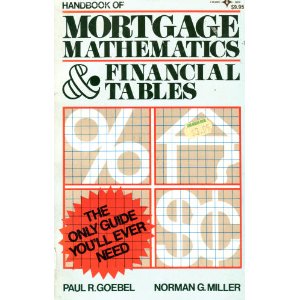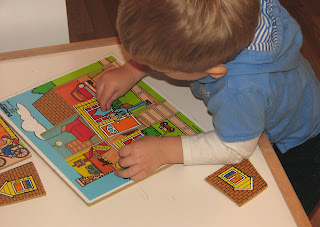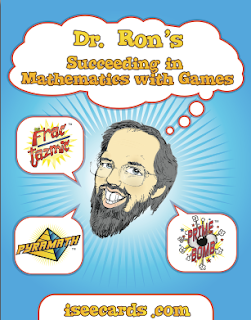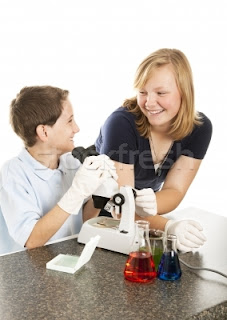
Kids and adults alike have had a lot of questions about Math. Here we will try to provide the answers to your most common questions to make Math learning fun, enjoyable and easy for both you and your child/children.
What is Mathematics or Math?
There are a lot of definitions about mathematics. The American Heritage Dictionary defines Mathematics as the study of the measurement, properties, and relationships of quantities, using numbers and symbols. Webster's Dictionary defines mathematics as the science of numbers and their operations, interrelations, combinations, generalizations, and abstractions and of space configurations and their structure, measurement, transformations, and generalizations. Whatever or however they define Mathematics or Math, simply put, it is made up of rules or ideas that have been accepted as truth through tests and converted into formulas that can be simply followed with an expected end result.
Why do we have to learn Mathematics?
You have to learn Mathematics because it is used in many other areas, subjects or sciences such as biology, physics, chemistry, psychology, sociology, economics, business, engineering, computers, communications and almost all other fields and industries. Even all the things that we use at home or in school which involves computers uses mathematics! That alone will force you to learn Mathematics.
How should we study Mathematics?
Roger Bacon, a philosopher and scientist said that, "All science requires Mathematics. The knowledge of mathematical things is almost innate in us... This is the easiest of sciences, a fact which is obvious in that no one's brain rejects it; for laymen and people who are utterly illiterate know how to count and reckon."
Thus if as Roger Bacon said that the knowledge of mathematics being innate in all of us then there is no need for us to study Math but although there may be a semblance of truth to this there is still a need to enhance this innate knowledge. You should be actively involved in studying Math inside and outside the classroom or at home. Constant practice is a good way to study Math and using Math games or other fun Math activities are excellent ways of studying and learning Mathematics.
What concepts should preschoolers learn in Math?
Concepts such as counting numbers, number sequences and one-to-one association or matching are the most important concepts that preschoolers should learn in Math. Additional concepts like measurement and weights can also be taught to preschoolers but should not be forced on them.
What concepts should primary students learn in Math?
Primary students learn, aside from enhancing their counting numbers, number sequences and matching skills, they also need to learn the basic concepts of addition and subtraction, telling time, place values and initial skills in conversion to Roman Numerals.
What concepts should elementary students learn in Math?
Elementary students as a whole should be able to learn, aside from the basic addition and subtraction, multiplication and division, working with fractions, algebraic equations, problem solving and basic geometry.
Do I need a tutor to learn Math?
If you feel that even with the available tools both tangible and online you have not yet improved your Math skills then a tutor might be needed. But, a word of advice, you can download as much drills or practice sets from the internet and ask the questions you need to ask to be able to refine your Math skills through online websites like this that a tutor would not be needed in the long run. Practice and active participation is important in order to learn Math the fast, fun and easy way.
Why are we afraid of Mathematics?
One probable reason why you are afraid of Math is because you started learning Math on the wrong foot. Some children in the past were taught that they have to learn Math early because they will have a hard time once they started school. The misconception brought fears to children then. Nowadays, Math activities, tips and tricks are available online and on paper and lots of games and fun activities are already available to help stimulate and promote Math skills such as board games and puzzles.
As a parent, how can I help my kids in learning Math?
The best way to help your kids learn Math is to start at home with basic Math activities like teaching them how to divide or share food among themselves or with their playmates, having them run errands for you so that they will be able to compute change as against the amount you gave and the amount they paid for or have them help you in measuring ingredients for baking a cake or muffin. There are endless ways you can create that will help your kids to learn Math without them even knowing it.
As a teacher, how can I show my students that Math is not something to be feared?
Fear of Math usually start from past failures that your students have encountered and to show your students that Math is not something to be feared you will have to devise ways to explain to them the various concepts as simply as possible and as easy for them to understand. You can start by making them play Math games to take their fears away before you explain to them the principles behind the concepts you would like to discuss to them.
When I was in grade school we did not have Mathematics, we had Arithmetic. What is the difference between Arithmetic and Mathematics?
Arithmetic is a branch of mathematics dealing with the basics of computation such as addition, subtraction, multiplication, division, fractions and anything to do with positive numbers and calculations while Mathematics includes arithmetic, geometry, algebra, trigonometry and other branches that all deal with patterns and structures and the application of logic.
Now that you know the basics of math, you can begin making math fun for your child! Find plenty of easy math problems for different year levels by clicking on the blue links!
Article Source: http://EzineArticles.com/?expert=Tommy_O_Coffler
What is Mathematics or Math?
There are a lot of definitions about mathematics. The American Heritage Dictionary defines Mathematics as the study of the measurement, properties, and relationships of quantities, using numbers and symbols. Webster's Dictionary defines mathematics as the science of numbers and their operations, interrelations, combinations, generalizations, and abstractions and of space configurations and their structure, measurement, transformations, and generalizations. Whatever or however they define Mathematics or Math, simply put, it is made up of rules or ideas that have been accepted as truth through tests and converted into formulas that can be simply followed with an expected end result.
Why do we have to learn Mathematics?
You have to learn Mathematics because it is used in many other areas, subjects or sciences such as biology, physics, chemistry, psychology, sociology, economics, business, engineering, computers, communications and almost all other fields and industries. Even all the things that we use at home or in school which involves computers uses mathematics! That alone will force you to learn Mathematics.
How should we study Mathematics?
Roger Bacon, a philosopher and scientist said that, "All science requires Mathematics. The knowledge of mathematical things is almost innate in us... This is the easiest of sciences, a fact which is obvious in that no one's brain rejects it; for laymen and people who are utterly illiterate know how to count and reckon."
Thus if as Roger Bacon said that the knowledge of mathematics being innate in all of us then there is no need for us to study Math but although there may be a semblance of truth to this there is still a need to enhance this innate knowledge. You should be actively involved in studying Math inside and outside the classroom or at home. Constant practice is a good way to study Math and using Math games or other fun Math activities are excellent ways of studying and learning Mathematics.
What concepts should preschoolers learn in Math?
Concepts such as counting numbers, number sequences and one-to-one association or matching are the most important concepts that preschoolers should learn in Math. Additional concepts like measurement and weights can also be taught to preschoolers but should not be forced on them.
What concepts should primary students learn in Math?
Primary students learn, aside from enhancing their counting numbers, number sequences and matching skills, they also need to learn the basic concepts of addition and subtraction, telling time, place values and initial skills in conversion to Roman Numerals.
What concepts should elementary students learn in Math?
Elementary students as a whole should be able to learn, aside from the basic addition and subtraction, multiplication and division, working with fractions, algebraic equations, problem solving and basic geometry.
Do I need a tutor to learn Math?
If you feel that even with the available tools both tangible and online you have not yet improved your Math skills then a tutor might be needed. But, a word of advice, you can download as much drills or practice sets from the internet and ask the questions you need to ask to be able to refine your Math skills through online websites like this that a tutor would not be needed in the long run. Practice and active participation is important in order to learn Math the fast, fun and easy way.
Why are we afraid of Mathematics?
One probable reason why you are afraid of Math is because you started learning Math on the wrong foot. Some children in the past were taught that they have to learn Math early because they will have a hard time once they started school. The misconception brought fears to children then. Nowadays, Math activities, tips and tricks are available online and on paper and lots of games and fun activities are already available to help stimulate and promote Math skills such as board games and puzzles.
As a parent, how can I help my kids in learning Math?
The best way to help your kids learn Math is to start at home with basic Math activities like teaching them how to divide or share food among themselves or with their playmates, having them run errands for you so that they will be able to compute change as against the amount you gave and the amount they paid for or have them help you in measuring ingredients for baking a cake or muffin. There are endless ways you can create that will help your kids to learn Math without them even knowing it.
As a teacher, how can I show my students that Math is not something to be feared?
Fear of Math usually start from past failures that your students have encountered and to show your students that Math is not something to be feared you will have to devise ways to explain to them the various concepts as simply as possible and as easy for them to understand. You can start by making them play Math games to take their fears away before you explain to them the principles behind the concepts you would like to discuss to them.
When I was in grade school we did not have Mathematics, we had Arithmetic. What is the difference between Arithmetic and Mathematics?
Arithmetic is a branch of mathematics dealing with the basics of computation such as addition, subtraction, multiplication, division, fractions and anything to do with positive numbers and calculations while Mathematics includes arithmetic, geometry, algebra, trigonometry and other branches that all deal with patterns and structures and the application of logic.
Now that you know the basics of math, you can begin making math fun for your child! Find plenty of easy math problems for different year levels by clicking on the blue links!
Article Source: http://EzineArticles.com/?expert=Tommy_O_Coffler




















